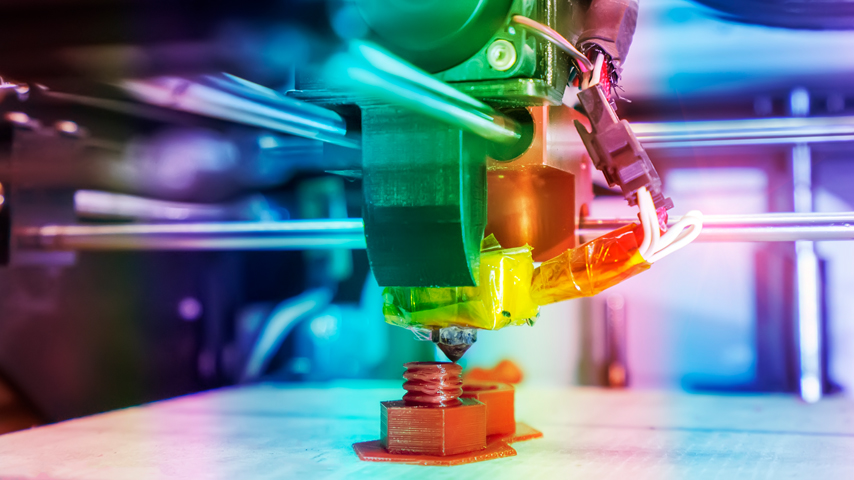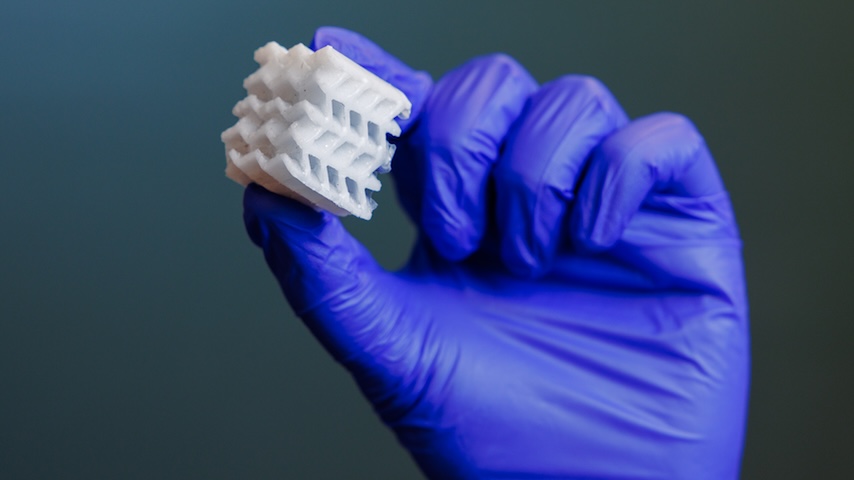5 Creative Applications of Additive Manufacturing
5 Creative Applications of Additive Manufacturing


Creative ways of using additive manufacturing (3D printing) include part consolidation, hospital point-of-care, human tissues for testing, strengthening supply chains, and building affordable housing.
As new AM/3DP technologies and materials continue to advance, so do the number of creative ways that AM can be used in the world today. Here are just a few:
1. Part consolidation
More manufacturers are using AM to combine multiple parts into a single part to simplify assembly and improve product performance and durability. Often the one combined part has an irregular geometry that can only be shaped exactly that way using AM. This part must also fit exactly into the space in the assembly that was previously occupied by the multiple parts, which can be challenging.
However, part consolidation makes assembly easier and faster with fewer potential failure points—resulting in higher durability and quality. Also, if metal parts are being converted into a single plastic part, the final product will be of lighter weight and easier to use.
2. Hospital point of care
Cost control is a huge issue in the healthcare industry. Increasingly, hospitals are using AM on site to make parts, devices, tools, and even patient-specific implants in the hospital setting. This saves time and money because the facilities do not have to deal with supply chain delays for critical components and materials, which can take up to a year. The reduction in production lead time and availability of biocompatible materials on site means more personalized solutions can be designed at the hospital, with direct input from physicians and surgeons. One of the most popular uses of AM is creating realistic 3D models of tissue or anatomy for pre-surgical planning. 3D-printed models that accurately simulate tissue and bone (and even bleed) allow surgeons to determine the best treatment option for a patient and practice the procedure before surgery.
3. Human tissue for testing
Living human tissue created with 3D-printed bioinks can be used for testing chemical ingredients, therefore reducing or eliminating the need for animal testing by cosmetics and pharmaceutical companies. For example, the Wyss Institute at Harvard University has developed a multi-material 3D bioprinting method that generates thicker vascularized tissues composed of living human cells that are stable and can function for up to six weeks.
Become a Member: How to Join ASME
These tissues closely resemble natural skin, including layered epidermis, and have the same barrier properties and responses to topically applied irritants, making them suitable replacements for the Draize test, an acute toxicity test that uses live rabbits.
4. Supply chain
Additive manufacturing has the potential to increase the resiliency and competitiveness of U.S. supply chains. On May 6th, President Biden and five leading U.S. manufacturers announced the launch of Additive Manufacturing Forward (AM Forward), an agreement among large manufacturers to help their smaller U.S.-based suppliers increase their efficiency and productivity by using AM.
More for You: 7 Ways 3D Bioprinting Will Advance Personalized Medicine
The federal government will support this effort with various federal initiatives. By using more domestic suppliers, manufacturers can shorten or completely reshore their supply chains to the U.S.
“Physical inventory is the weak link in any supply chain,” stated The Fabricator. “The fact that part designs can be housed digitally minimizes physical inventory and transportation costs. With a digital warehouse, once a part is ordered it can be automatically sent to the best AM production partner, based on the partner’s location, capabilities, and capacity.
5. Affordable housing
3D printing can potentially be a faster and cheaper method to build homes, especially with the growing shortage of affordable housing around the world. As construction costs rise, AM printing manufacturers are creating systems that can 3D-print the outer structures of buildings with a concrete mixture. Openings are left for windows and doors.
A start-up firm called ICON recently 3D-printed a house for $10,000 using its Vulcan printer, which it claims is the first permitted and code-compliant home 3D-printed in the U.S. The company continues to advance its technology and hopes to reduce the total cost to $4,000 and the construction time to six hours. This would be especially beneficial for constructing emergency shelters.
Moving Forward
New, powerful software is a big reason AM is advancing so quickly. Engineers depend on sophisticated software—for example, finite element analysis, generative design, and rapid and virtual prototyping—during all the key stages of product design, development, and production. AM is especially valuable for creating solid functioning prototypes that are near-production ready, saving time and money and getting the product into the marketplace faster. AM continues to expand the design options for engineers, who are limited only by the boundaries of their imaginations.
Mark Crawford is a technology writer in Corrales, N.M.





